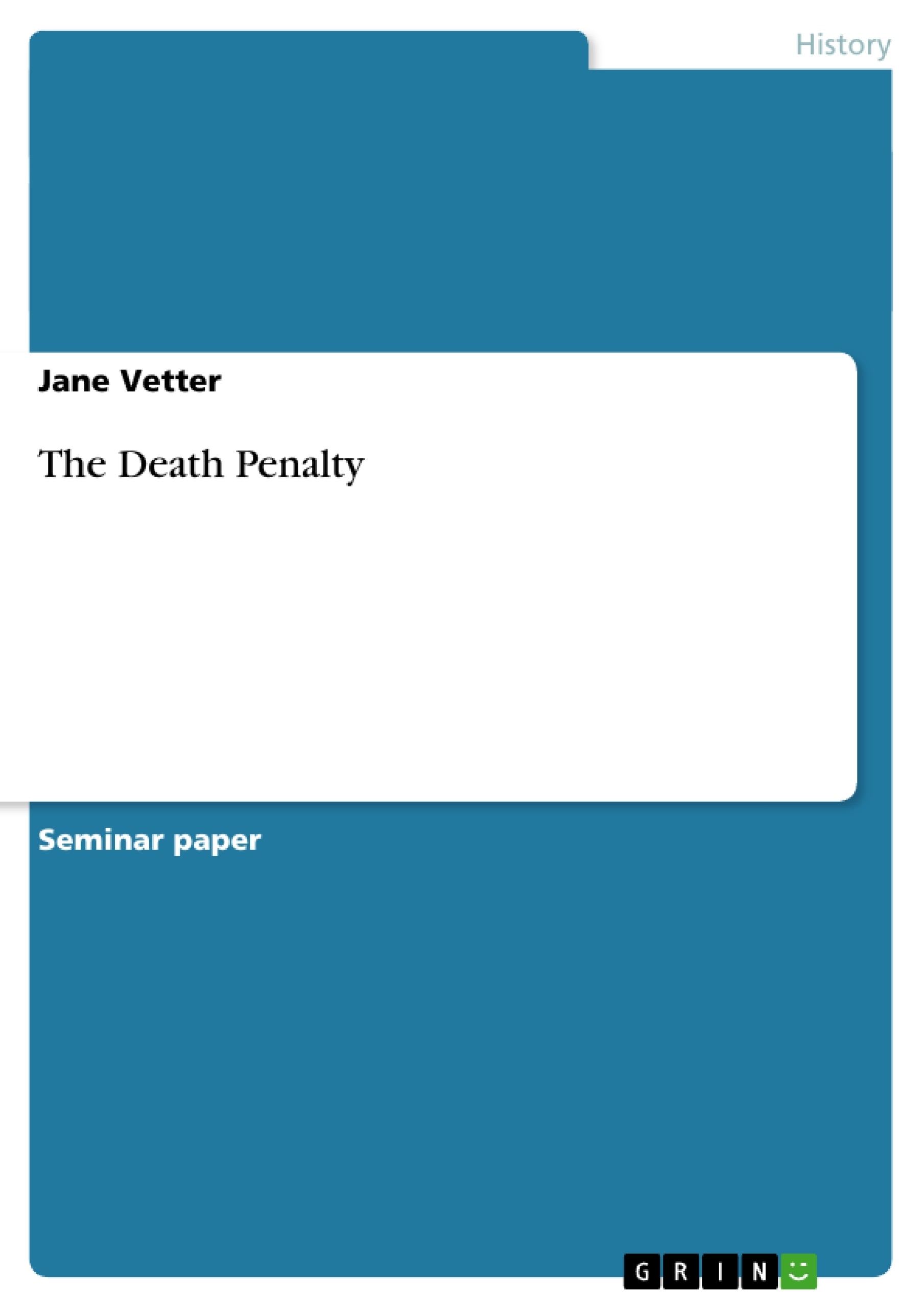According to the NAACP Legal Defense and Educational Fund Fall 2006 report, the total
number of death row inmates amounts to 3,344. There are roughly 41 percent black and 45 percent
white prisoners awaiting their execution. Since the reinstatement of capital punishment in 1976,
1047 people have been executed. (Death Row 1, 5). Among all U.S. states allowing the death
penalty, California, Texas and Florida have the most criminals on death row (Death Row 29).
Normally, major reasons in favor of capital punishments are retribution, deterrence, and the
general protection of society. Many people experience poetic justice and indemnification when
murderers receive their death sentences. They disregard the unproportional, high cost of the capital
punishment process which evolves due to repeated appeals and prisoners spending years or even
decades on death row (Banner 295).
Inhaltsverzeichnis (Table of Contents)
- The Role of Slavery and Racism
- Cultural Considerations
- Technological Innovations
- Legal and Constitutional Arrangements
- Culture War Politics
Zielsetzung und Themenschwerpunkte (Objectives and Key Themes)
This paper examines the reasons behind the retention of the death penalty in the United States, particularly focusing on the role of legal and constitutional arrangements, culture war politics, and historical factors like slavery and racism. It also analyzes the overall dissatisfaction with current regulations of capital punishment processes.
- The persistence of racial bias in the application of the death penalty
- The influence of cultural factors on the death penalty debate
- The impact of technological innovations on execution methods
- The role of legal and constitutional arrangements in shaping the death penalty
- The significance of culture war politics in the ongoing debate over capital punishment
Zusammenfassung der Kapitel (Chapter Summaries)
The paper begins by exploring the historical context of the death penalty in the U.S., highlighting the lasting impact of slavery and racism on its application. It then examines the role of cultural considerations, such as the idea of American exceptionalism, in the debate over capital punishment. The paper further delves into the influence of technological innovations on execution methods, particularly the shift towards lethal injection and its implications. Finally, the paper focuses on the two dominant factors contributing to the retention of the death penalty: legal and constitutional arrangements and culture war politics.
Schlüsselwörter (Keywords)
This paper examines the death penalty in the United States, focusing on the role of legal and constitutional arrangements, culture war politics, racial bias, cultural considerations, technological innovations, and the overall dissatisfaction with current regulations of capital punishment processes. It explores the historical context of slavery and racism, and discusses the influence of these factors on the application of the death penalty.
- Citation du texte
- Jane Vetter (Auteur), 2007, The Death Penalty, Munich, GRIN Verlag, https://www.grin.com/document/116458
-

-

-

-
Téléchargez vos propres textes! Gagnez de l'argent et un iPhone X. -

-
Téléchargez vos propres textes! Gagnez de l'argent et un iPhone X. -

-
Téléchargez vos propres textes! Gagnez de l'argent et un iPhone X. -

-
Téléchargez vos propres textes! Gagnez de l'argent et un iPhone X. -

-
Téléchargez vos propres textes! Gagnez de l'argent et un iPhone X.

